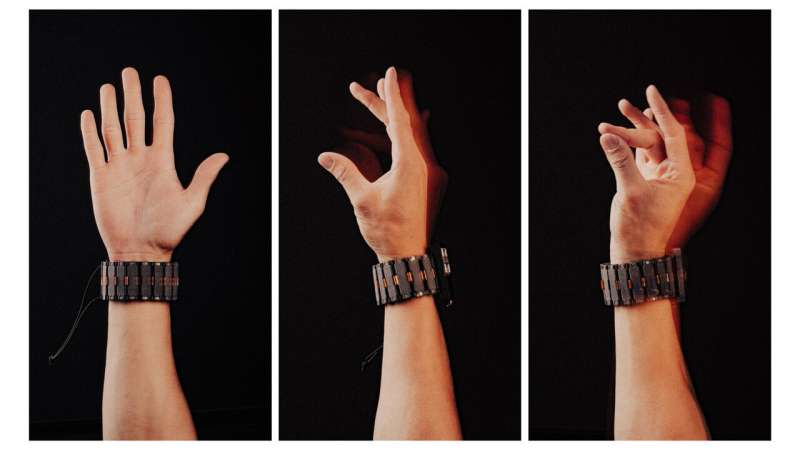Meta’s wristband breakthrough lets you use digital devices without touching them
Could Meta be on the verge of transforming how we interact with our digital devices? If the company’s latest innovation takes off, we might soon be controlling our computers, cell phones and tablets with a simple flick of the wrist.
Researchers at Meta’s Reality Labs division have unveiled an experimental wristband that translates hand gestures and subtle finger movements into commands that interact with a computer. This allows a user to push a cursor around a screen or open an app without needing a mouse, touchscreen or keyboard. The technology can even transcribe handwriting in the air into text (currently at a speed of 20.9 words per minute).
In a paper published in Nature, the team describes how its sEMG-RD (surface electromyography research) works. The wristband uses a technique called electromyography to pick up electrical signals when the brain tells the hand to perform an action. It then converts those signals into commands that control a connected device, such as your phone.
[embedded content]
Meta’s breakthrough
Meta’s scientists are building on decades-old ideas, but they have taken them one step further. They used artificial intelligence to analyze large amounts of data from thousands of individuals who tested the prototype, identifying common patterns. So when a user now slips on a wristband, it can look for these patterns. Therefore, unlike previous gesture-detection systems that required training on specific individuals, Meta’s wristband quickly assesses signals and adapts to the wearer.
“To our knowledge, this is the first high-bandwidth neuromotor interface with performant out-of-the-box generalization across people,” wrote the researchers.
Applying the technology
While there are plenty of possible commercial applications of the technology, such as in gaming and smart home control, the team is focused on helping those with severe disabilities. They are currently working with Carnegie Mellon to explore how this technology could benefit people with spinal cord injuries.
That’s because Meta’s wristband is so sensitive it can pick up the faintest muscle activity, even when there’s no visible hand movement. The intention to move is enough for the system to translate it into a command. This could allow individuals with complete hand paralysis to use a computer or other devices.
There are many new technologies being developed for hands-free control, such as Elon Musk’s Neuralink, which aims to plant chips in people’s brains. Most are years away from being available. Meta’s wristband, on the other hand, is not only noninvasive but, according to the researchers, could be available within the next few years.
Written for you by our author Paul Arnold,
edited by Lisa Lock, and fact-checked and reviewed by Andrew Zinin—this article is the result of careful human work. We rely on readers like you to keep independent science journalism alive.
If this reporting matters to you,
please consider a donation (especially monthly).
You’ll get an ad-free account as a thank-you.
More information:
Patrick Kaifosh et al, A generic non-invasive neuromotor interface for human-computer interaction, Nature (2025). DOI: 10.1038/s41586-025-09255-w
© 2025 Science X Network
Citation:
Meta’s wristband breakthrough lets you use digital devices without touching them (2025, July 25)
retrieved 26 July 2025
from https://techxplore.com/news/2025-07-meta-wristband-breakthrough-digital-devices.html
This document is subject to copyright. Apart from any fair dealing for the purpose of private study or research, no
part may be reproduced without the written permission. The content is provided for information purposes only.

Comments are closed